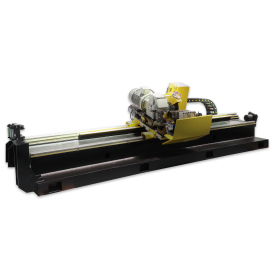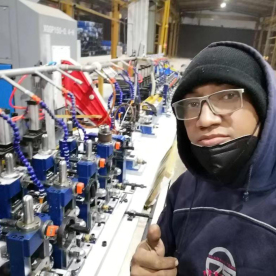[CNC Flying Saw Machine]Exploring the Efficiency and Precision of the CNC Flying Saw Machine in Modern Manufacturing Processes
News 2024-7-31
****In the ever-evolving landscape of modern manufacturing, precision and efficiency are paramount. The advent of advanced machinery has transformed traditional practices, making processes faster, safer, and more reliable. Among the technological innovations reshaping the industry is the CNC (Computer Numerical Control) flying saw machine. This article delves into the operation, benefits, applications, and future prospects of CNC flying saw machines, emphasizing their critical role in enhancing manufacturing efficiency.
Understanding CNC Flying Saw Machines
A CNC flying saw machine is a high-speed cutting device that utilizes computer numerical control technology to optimize cutting processes. Unlike conventional saws, which operate at fixed speeds, CNC flying saws can adjust their cutting performance in real-time based on the material and preset parameters. This results in a more efficient cutting process that minimizes waste and maximizes productivity.
The core function of the CNC flying saw is to cut materials—typically metals, plastics, and other solid materials—at high speeds while maintaining accuracy. The machine achieves this through a unique mechanism where the saw blade moves quickly through the material, often using a linear motor to enhance speed and reduce the mechanical components that can wear down over time.
Key Features of CNC Flying Saw Machines

Exploring the Efficiency and Precision of the CNC Flying Saw Machine in Modern Manufacturing Processes
2. **High Speed**: One of the standout features of these machines is their cutting speed. The advanced technology allows operators to achieve high production rates, which is crucial in fast-paced manufacturing environments.
3. **Adaptability**: The programming capabilities of CNC flying saws make them incredibly versatile. They can be programmed to handle different types of materials, sizes, and thicknesses, making them suitable for various applications.
4. **Reduced Labor Costs**: With automation at the helm of CAD/CAM machining, the reliance on manual labor decreases significantly. This reduction not only cuts costs but also diminishes the likelihood of human error, enhancing overall safety.
5. **Minimal Waste**: The precise nature of CNC flying saws ensures that materials are cut with minimal excess. Manufacturers benefit from reduced material costs and a lower environmental impact.
Applications in Various Industries
CNC flying saw machines find utility across multiple sectors, including:
- **Metal Fabrication**: In industries focused on metalworking, such as automotive and aerospace, precision cutting is critical. The CNC flying saw streamlines operations, ensuring accurate cuts for components that must fit together without gaps.
- **Construction**: In the construction sector, where precise measurements can significantly affect structural integrity, CNC flying saws are invaluable. They ensure that beams, columns, and other framework components are cut to exact specifications.

Exploring the Efficiency and Precision of the CNC Flying Saw Machine in Modern Manufacturing Processes

Exploring the Efficiency and Precision of the CNC Flying Saw Machine in Modern Manufacturing Processes
The Future of CNC Flying Saw Technology
As manufacturing continues to advance, the importance of CNC flying saw technology cannot be overstated. Innovations such as enhanced software for machine learning and data analytics are paving the way for even more refined processes. As manufacturers adopt Industry 4.0 principles, such as interconnected devices and predictive maintenance, the integration of CNC flying saw machines will become even more seamless.
In addition to technological advancements, there is a growing focus on sustainability. Future developments may incorporate eco-friendly materials and energy-efficient practices, allowing manufacturers to minimize their carbon footprint while still enhancing productivity.
Conclusion
CNC flying saw machines represent a significant leap forward in machining technology, offering precision, speed, and versatility that traditional saws simply cannot match. As industries strive to meet the demands for higher standards of production efficiency and quality, these machines will play an increasingly vital role. With ongoing technological advancements and the potential for further innovation, the future of CNC flying saw technology appears bright, promising to elevate manufacturing capabilities even further.
